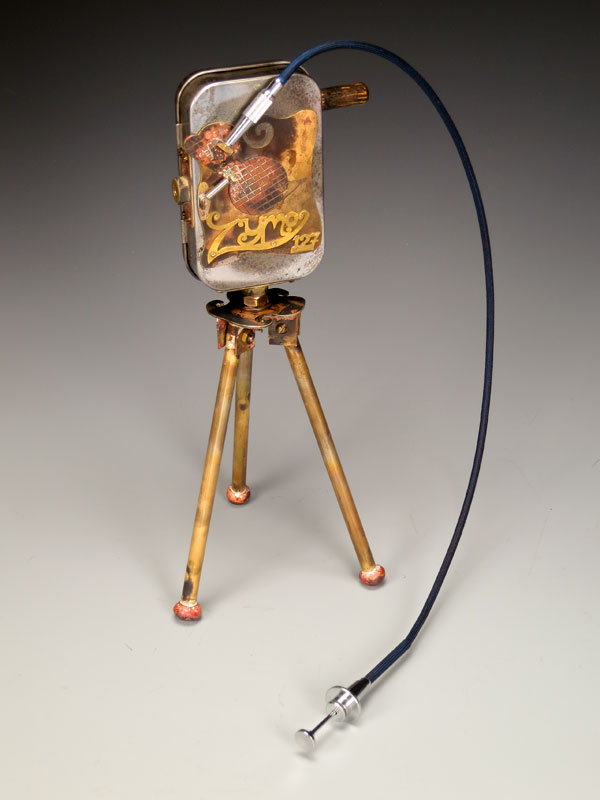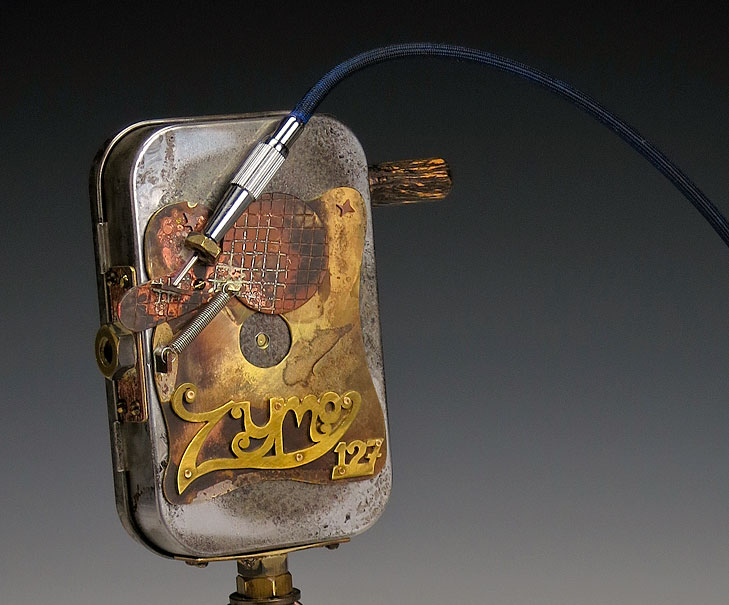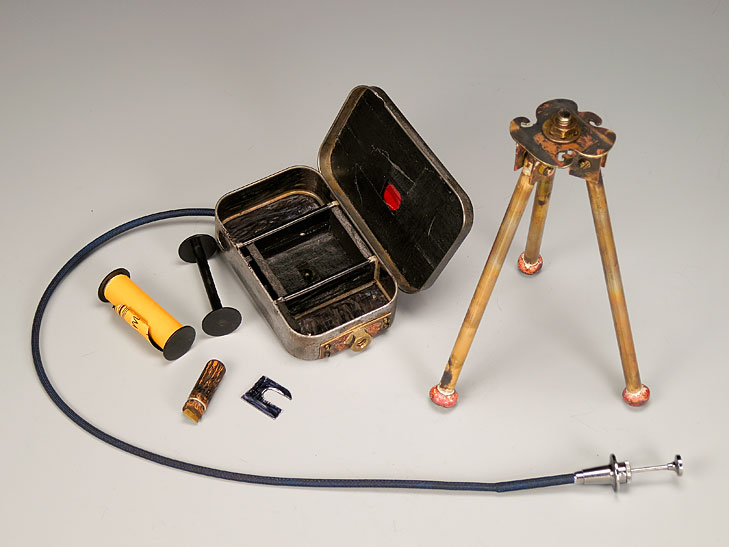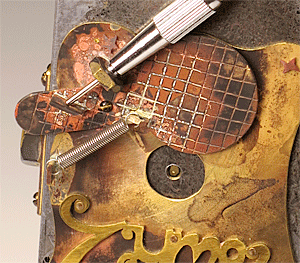![]()
 |
| Zymo 127 pinhole camera. ©2011 About 12 inches high. Altoids tin, brass, found spring, wooden dowel, brass nuts, fabricated. 127 film format. This camera was built to take photos in the Zymoglyphic Museum, where light levels are low. The photos taken with this camera are in my handmade book, Spirits Under Glass. I cut down Tri-X 120 film to 127 format and usually get 19 shots on a roll. There is a gallery of photos from the Zymo 127 here. Blog post about the project. My idea was to lower the camera into the exhibit and capture the environment as if I was a participant, not a viewer. I wanted to stay with the aesthetic of the Zymoglyphic culture in making the camera. Studying the exhibits in the Zymoglyphic Museum lead me to believe the Zymoglyphic people favor a combination of sophisticated ideas and fairly primitive technology. Hence the recycled tin can and gritty heat treatment on the metal. The piece of metal that pivots to expose the pinhole was left over from another project, and the spring was found in a container of random stuff. There were times when I had to make something more technical than seemed fitting - for example the shutter release. |
 |
| In this detail shot you can see the pinhole, a tiny black dot in the center of the circle on the camera. You can also see the tripod mounts on the camera - two nuts that were soldered to pieces of brass, then riveted to the camera body on the bottom and left. There is a handmade shutter release attachment, another nut, soldered to a piece of brass. That works perfectly, inspite of it's funky appearance. The cable release itself is purchased. |
 |
| Here you can see the camera open, the parts for the camera and the tripod. The parts include a roll of 127 film, the take-up spool for the film, the wooden dowel that advances the film and a piece of credit card cut to hold the wooden dowel in place. The red window in the back of the camera is clear red plastic, so I can see the exposure number on the light proof paper that protects the film |
 |
| The shutter in action. You can see the parts of the camera in this flickr set. |